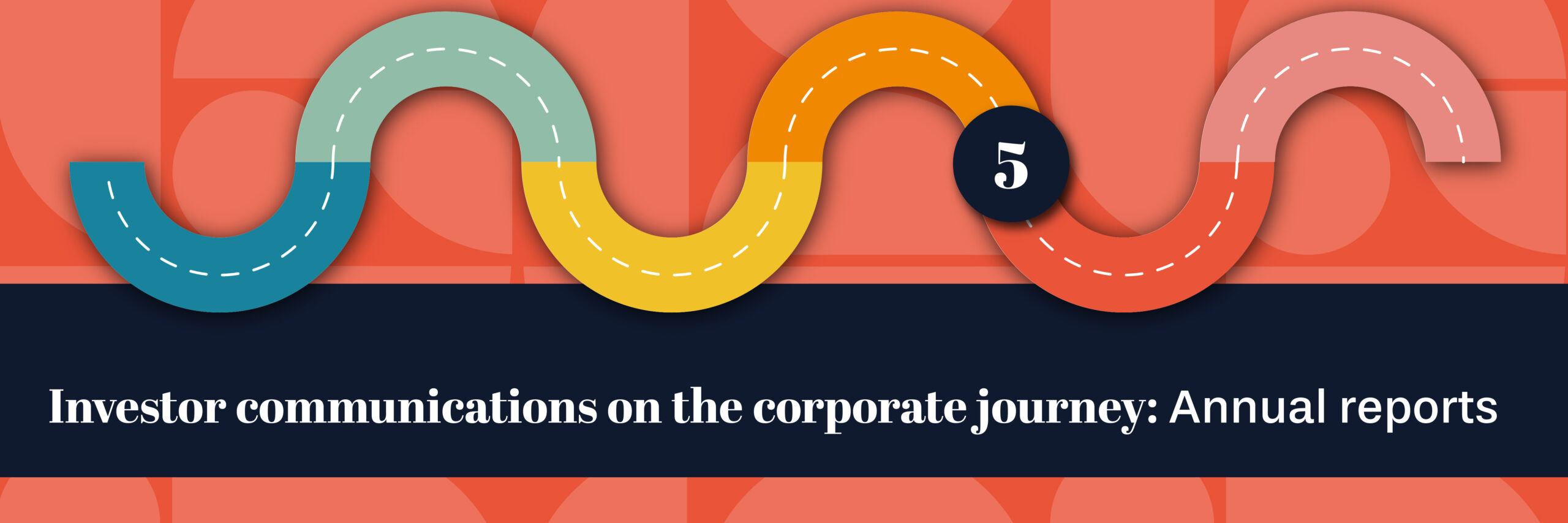Investor communications on the corporate journey: Annual reports
March 2023

There are a number of stages to the corporate journey, and a lot to consider when it comes to investor communications. Last week, we talked about pre-Initial Public Offering (IPO) research & pathfinder documents, and why they’re both so crucial.
This week, we’ll be telling you all you need to know about inaugural annual reports, including what to put in your annual report, how virtual data rooms can help you collaborate in its preparation, and how they can optimise investor communications.
Investor communications: What to include in your inaugural annual report
There are no definitive guidelines for what to include in your annual reports, but they all tend to follow a similar structure. Whether you’re writing your inaugural annual report or you’ve written several, the sections included will be more or less the same. There’s one main difference between an inaugural report and any annual reports that follow it, and that’s really just the amount of information you can include.
Even then, it’s important not to overstuff a report. Just because you possess all the information doesn’t mean your investors will want to hear every detail. If you stick to the following sections, you should be able to put together an annual report that is both thorough and gets to the point:
- An introduction; provide a general overview of your business’s past year. Ideally, your annual report’s opening statement should sum up how your company is performing.
- Financial and operating highlights from the past year.
- Address (also known as letter) from your CEO; while your annual report can typically be accessed by anyone with a stake in your company, this message should be addressed specifically to shareholders.
- Section 172 statement showing how your business impacts key stakeholders – employees, suppliers, customers, the community, and the environment.
- ESG and corporate governance disclosures; this is an increasingly crucial aspect of investor communications.
- Financial statements and notes to those financial statements.
- Report from the auditor concerning the financials of your company.
- A financial summary of the past year.
- Images and infographics; there can be a lot more to your annual report than walls of text.
Share your annual report with a data room
When you’re putting together your first annual report, it can be hard to know where to begin. A virtual data room is a good place to start and can be a great way to upload and access all relevant documents in one single, secure space. Annual reports are a collaborative effort, and a data room means you can prepare them jointly with your colleagues, as well as third parties such as auditors and registrars. It also means your designers and production team can work on each draft as you complete them and place updated proofs back in the data room.
There are plenty of other ways in which virtual data rooms can optimise your investor communications. Any amount, and any type, of documents can be stored securely in your data room. Say a prospective investor reads your annual report and is seeking more information. A data room means you can share certain documents with that investor, and only that investor. It’s a far more secure means of investor communications, especially when compared to sharing information via a platform like Google Drive.
Eager to learn more about the fundraising journey and investor communications? Keep an eye out for our next blog. And if you’re looking for an affordable virtual data room, head to our Engage page to find out more.


